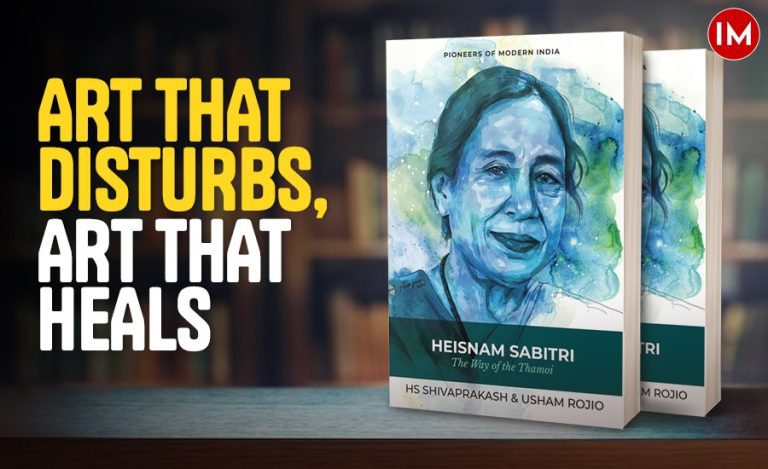The 25th Hornbill Festival of Nagaland was bigger than ever. This year, the festival attracted more than 1.73 lakh visitors, including 2,375 international tourists, making it one of India’s most anticipated cultural events. Held annually at the Naga Heritage Village in Kisama, just 12 km from Kohima, the festival uniquely showcases Nagaland’s diverse traditions, drawing both national and international visitors eager to experience its vibrant cultural tapestry.
A CULTURAL EXTRAVAGANZA
The Hornbill Festival, often referred to as the “Festival of Festivals,” runs from December 1 to 10 each year. It brings together all 18 Naga tribes, each with their own distinct language, customs, and rituals. The festival’s primary aim is to foster inter-tribal unity while preserving and promoting the cultural heritage of Nagaland.
Named after the hornbill, a bird revered in Naga folklore, the festival takes place at the Naga Heritage Village, which serves as a cultural hub for the state’s diverse tribes. The village consists of 17 indigenous Morungs (youth dormitories), each representing a different tribe, offering a rare opportunity for visitors to explore the customs and traditions of all Nagaland’s tribes in one place.
This year’s theme, “Cultural Connect,” emphasised the importance of preserving indigenous practices while embracing modern elements. Visitors witnessed folk dances, traditional songs, indigenous games, and rituals, all of which were performed daily. Additionally, the festival featured art exhibitions, food stalls, herbal medicine stalls, fashion shows, beauty contests, and much more, providing a complete immersion into Naga culture.
A GLOBAL STAGE FOR NAGA MUSIC AND DANCE
One of the key highlights of the festival is the Hornbill International Music Festival, renowned as one of the longest and most diverse music festivals in the country. The 2024 edition saw a blend of local, national, and international performances. With dozens of bands performing, the music festival was a fusion of modern beats and traditional sounds, offering an electrifying experience for all attendees. International artists contributed to the festival’s growing global appeal, solidifying its reputation as a major cultural event.
“This year’s festival also saw an impressive increase in international participation, with countries such as the UK, USA, and Peru sending delegations,” Veyielo Doulo, Tourism Director, Nagaland, shared with Indian Masterminds. These international delegations added a fresh dimension to the event, enriching it with diverse cultural perspectives and performances.
In addition to the international presence, states like Telangana and Sikkim joined the celebration, contributing to the festival’s inter-state collaborations and promoting national unity through cultural exchange. This increasing international involvement is a hallmark of the festival, building on past editions that have featured participants from countries like Korea, Japan, and Thailand. Each of these nations has played a crucial role in amplifying the festival’s global appeal and strengthening its identity as a platform for cross-cultural interactions.
ECONOMIC IMPACT
The Hornbill Festival is not just a cultural gathering; it’s also a significant economic driver for the region. “In 2024, the government invested approximately ₹6.5 crore into organising the event. However, the economic benefits far exceeded the investment, with the festival generating between ₹100 crore to ₹139 crore in revenue,” Veyielo Doulo, Tourism Director, Nagaland, shared with Indian Masterminds. This boost to the local economy comes from the influx of tourists who spend on travel, accommodation, food, and local handicrafts.
Despite the festival’s success, organisers face challenges, particularly related to infrastructure. The region has limited accommodation capacity, which affects the ability to publicise the event on a larger scale. Star-rated hotels and sufficient facilities are in short supply, making it difficult to accommodate the growing number of tourists. “However, we are working on improving the infrastructure to ensure that the festival can continue to grow,” Mr. Doulo added.
PRESERVING TRADITIONS
At its core, the Hornbill Festival is a celebration of tradition. While the world around Nagaland evolves, the festival maintains its authenticity. Local handicrafts, organic foods, and tribal products like wood carvings, honey, and textiles are showcased at the event, ensuring that the focus remains on preserving indigenous practices. The traditional arts are complemented by modern elements like art installations, fashion shows, and contemporary music, creating a perfect blend of old and new.
Visitors can enjoy a variety of activities, from traditional Naga wrestling and archery competitions to more relaxed experiences like the Artists’ Corner, where interactive workshops and art battles take place. The Artisans’ Corner also provides a platform for local craftsmen to display their work, offering visitors a chance to take home authentic Naga art and crafts.
LOOKING FORWARD
The Hornbill Festival continues to grow and evolve, with plans to further enhance its global profile. The festival, which is already a national festival, aims to become an even more significant platform for cultural exchange in the coming years. As Nagaland’s tourism industry flourishes, the Hornbill Festival will play a central role in shaping the state’s identity as a major cultural destination in India.
“As it moves towards its 26th edition in 2025, the Hornbill Festival is set to continue attracting tourists from all over the world, with hopes to eventually become an international event that showcases the beauty and diversity of not just Nagaland but all of India,” Mr. Doula said.
With each passing year, the Hornbill Festival grows more than just an event; it becomes a symbol of unity, cultural pride, and the living traditions of Nagaland. For anyone seeking to understand the spirit of this vibrant region, the festival is an unmissable experience.
































